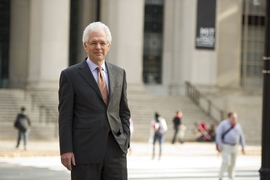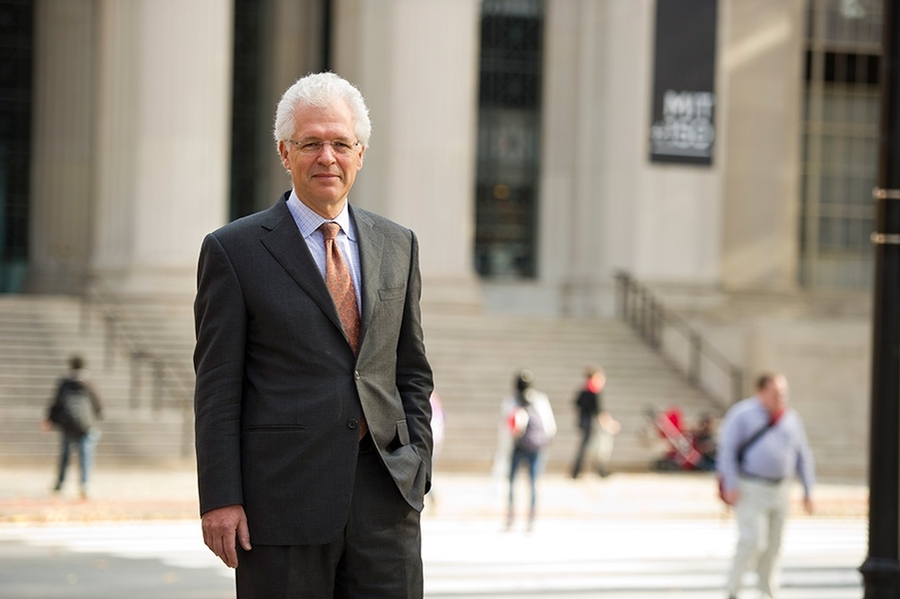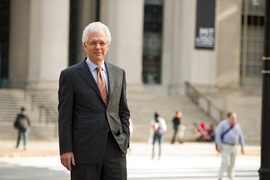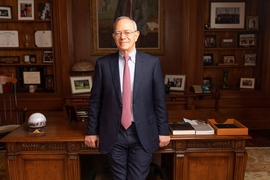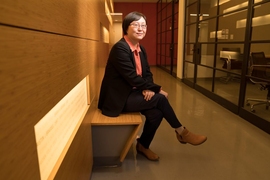On Nov. 12 and 13, leaders in industry, government, and academia will convene at the inaugural MIT China Summit in Beijing, to explore topics at the frontiers of science and technology and the role of research and education in shaping tomorrow’s world. MIT News spoke with Richard Lester, the associate provost of MIT who oversees international activities, about the summit and its significance for the Institute.
Q: Why is MIT doing a summit in China?
A: The idea for the MIT China Summit came out of the MIT Global Strategy report published by my office last year. One of the report’s recommendations was for the Institute to convene periodic summits in targeted regions of the world, to demonstrate MIT’s interest in working with and learning from partners in these regions; to increase regional knowledge of who we are, how we work, and what we stand for; and to provide a focus for developing new collaborations. This is the first such summit. Many people may wonder why we’re doing this summit now in light of the current tensions between the U.S. and China. I think the answer is that even though there are aggravated political strains over trade and technology, at the same time there are opportunities for us to work together on issues that are important to both countries and also to the rest of the world — issues like climate change mitigation, clean energy, environmental sustainability, urbanization, and food and water security. Indeed, now may be an especially important time for a university like MIT to focus attention on the possibilities for U.S.-China cooperation in applying science and technology to help solve great global challenges.
As President Reif recently noted in an op-ed for The New York Times, China is advancing rapidly in critical fields of science and technology. In areas such as quantum computing, 5G technology, and facial and spoken language recognition, China is a leader. The Chinese are also making bold national investments in key areas of research like biotechnology and space, and directly supporting startups and recruiting talent from around the world. Chinese researchers are increasingly present at the frontiers of science and technology, where MIT faculty and students must also be.
At the same time, we understand that interactions with China must be approached thoughtfully and should be carefully reviewed, as is the case with our other international engagements. The summit will provide an opportunity for us to talk about what is most important to us in possible future China collaborations.
Q: What will happen at the summit?
A: The Summit in Beijing will be a two-day event. On the first day, several MIT programs will be hosting activities and events around the city. These will provide snapshots of different facets of MIT and what we are doing in China. For example, Professor Siqi Zheng, Director of the China Future City Lab at DUSP [Department of Urban Studies and Planning], will hold a symposium on new urban developments in China. MIT Sloan Global Programs will hold its inaugural International Faculty Fellows Conference at Tsinghua University. MIT Professional Education will host a workshop focused on innovation for senior executives and MIT alumni. And the Institute will also host MIT Better World (Beijing), a special reception for alumni featuring a fireside chat with President Reif.
The second day will consist of a plenary conference. This event will engage the audience — some 500 invited guests from academia, industry, finance, and government, as well as MIT alums — in an MIT-mediated survey of some of the most exciting topics at the frontiers of science as well as potential solutions to some of the world’s most challenging problems. The conference will be opened by President Reif, and the program will feature 15 leading MIT professors, together with prominent Chinese scientific and business leaders. Two key themes of the event will be: What can we learn from each other, and what might we do together to address major global challenges.
Our local host for all these events is the Chinese Academy of Sciences.
Q: How far back does MIT’s engagement with China go?
A: The first Chinese student came to MIT in 1877, to study at MIT’s School of Mechanic Arts. Over the next 50 years, 400 Chinese students were enrolled here at MIT, many of them sent by the Chinese government. This history was beautifully told by Professor Emma Teng in an exhibit she curated last year called China Comes to Tech. She showed us that these early Chinese students were deeply involved in all aspects of the MIT community. They came to study subjects like railroad engineering, mining engineering, and naval architecture, and they also participated in athletics, debate, theater, the professional societies, and virtually every aspect of student life.
Chinese students have brought so much to our campus over the past 140 years. And our Chinese faculty and alumni, people like I.M. Pei, Sam Ting, Charles Zhang, and others, have enjoyed great entrepreneurial and academic success and made important contributions in the U.S., in China, and around the world. The MIT China Summit will celebrate this history, while looking ahead to what we hope will be a new century of even more creative and dynamic interactions between MIT and China.
